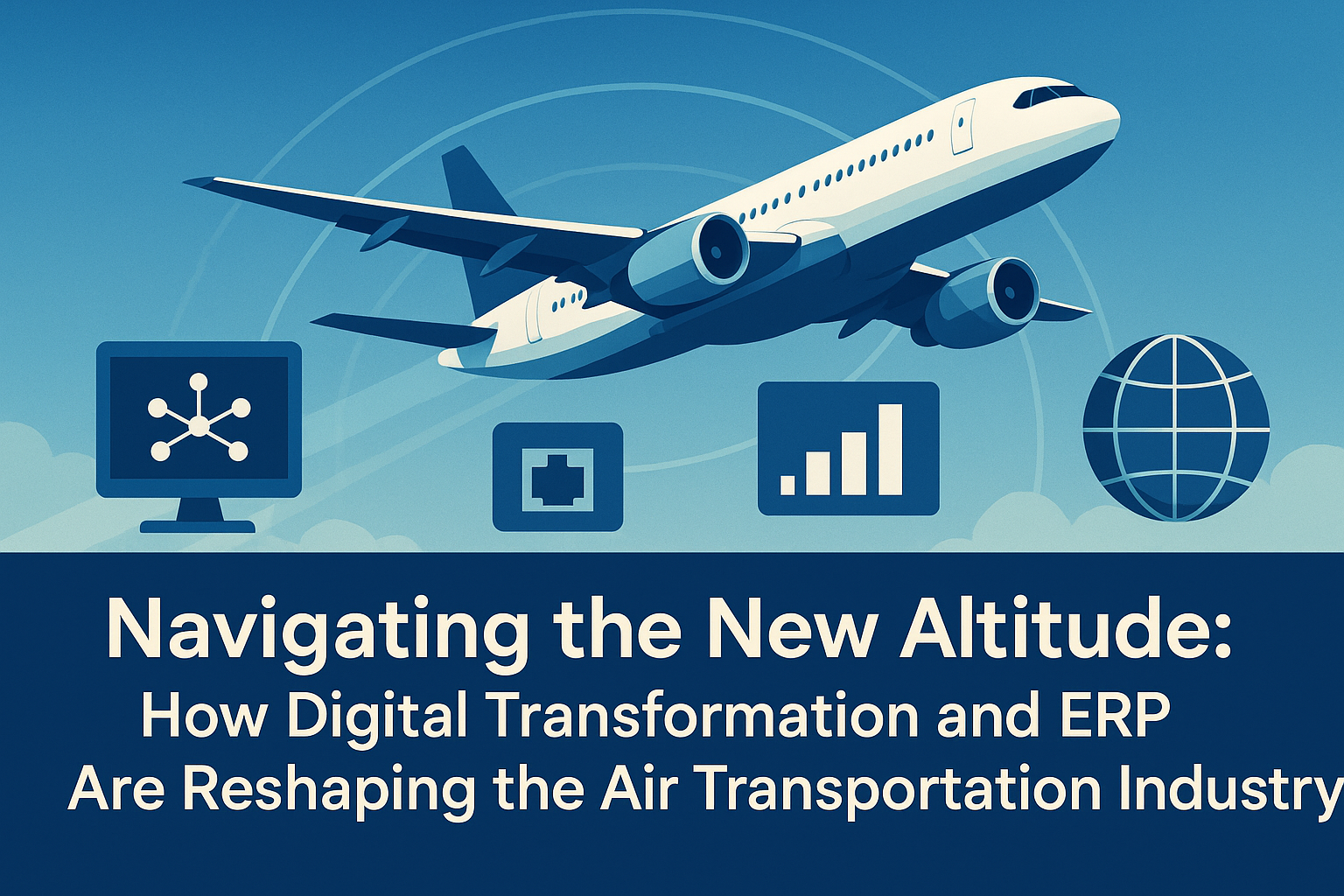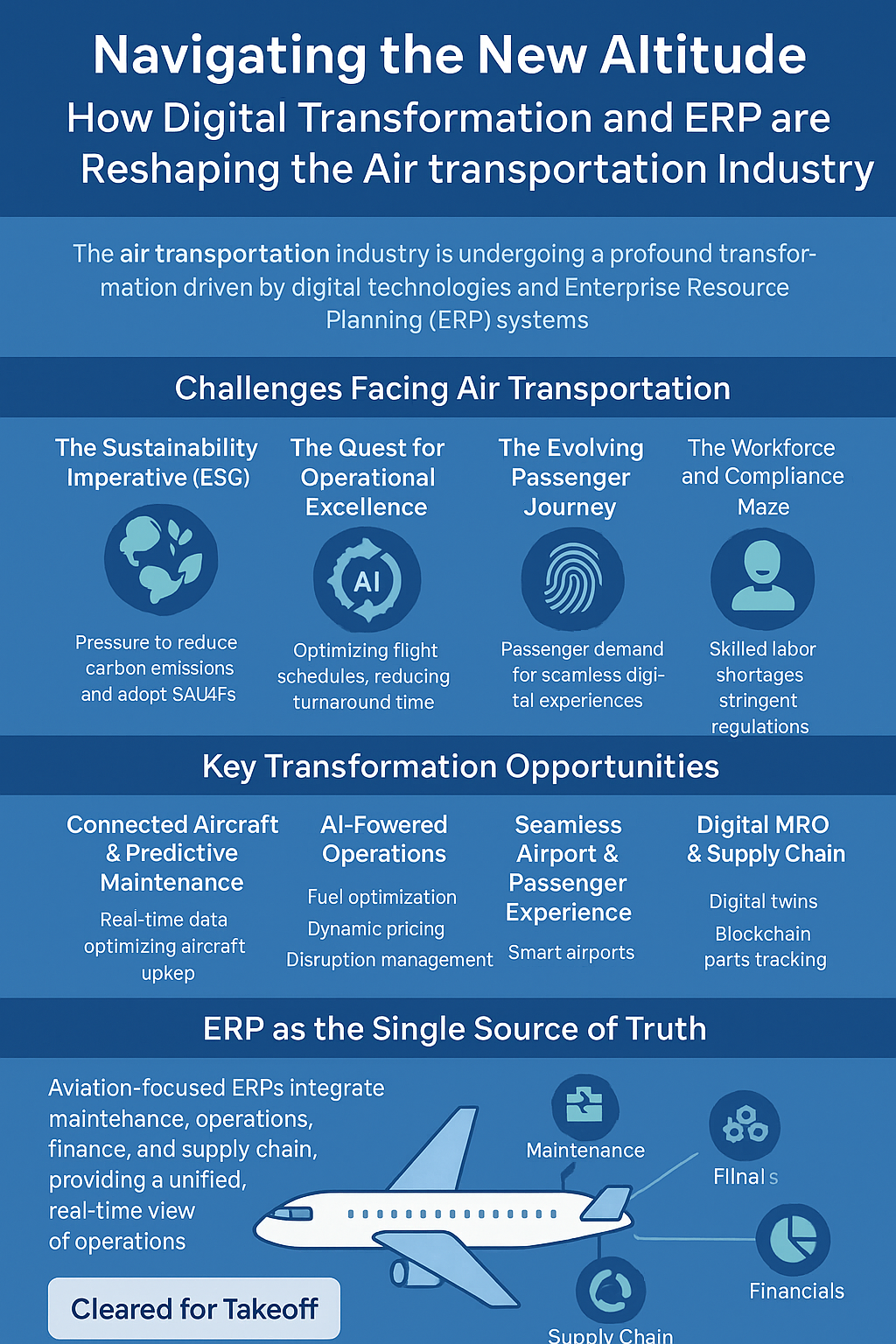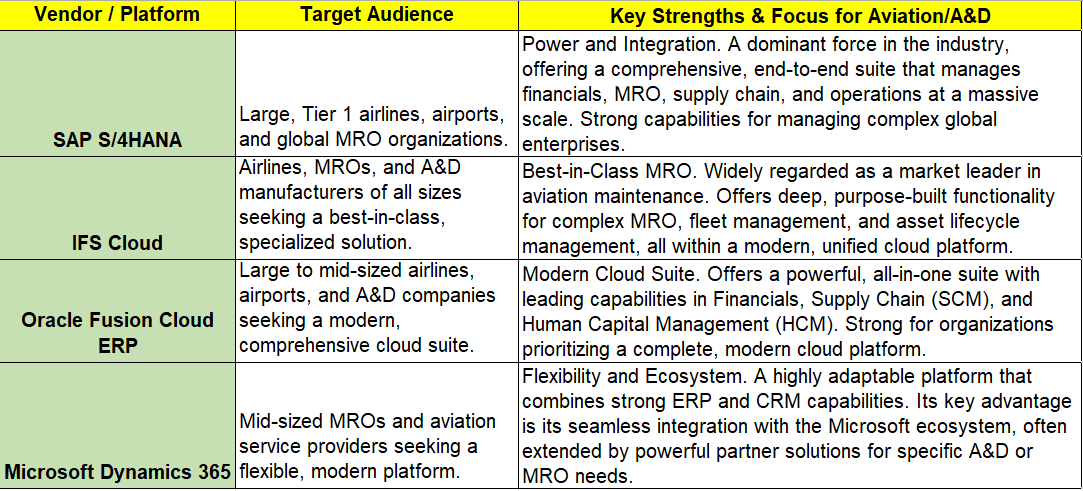Navigating the New Altitude: How Digital Transformation and ERP are Reshaping the Air Transportation Industry
2025-09-24 · By Anil Kancharla · 7 min read
❤️ 0 Likes · 👁️ 0 Views
 AI-generated image for illustration purposes only.
AI-generated image for illustration purposes only.
Navigating the New Altitude: How Digital Transformation and ERP are Reshaping the Air Transportation Industry
 AI-generated image for illustration purposes only.
AI-generated image for illustration purposes only.
Navigating the New Altitude: How Digital Transformation and ERP are Reshaping the Air Transportation Industry
The air transportation industry is the lifeblood of the global economy and the embodiment of human connection. It’s a marvel of logistics, engineering, and service, operating 24/7 to connect people and commerce across continents. But as we navigate the mid-2020s, this essential industry is flying through its most challenging and transformative period in history.
Airlines, airports, and their maintenance partners are grappling with a powerful confluence of forces: an urgent mandate for sustainability, relentless pressure to improve operational efficiency in the face of volatile costs, a new generation of passengers demanding a seamless digital journey, and complex global workforce and supply chain challenges. The legacy systems and siloed processes of the past are no longer sufficient to navigate these turbulent skies.
The flight plan for the future is one of bold reinvention, charted by digital transformation. And the integrated flight deck, the central nervous system connecting every aircraft, every passenger, and every process, is a modern Enterprise Resource Planning (ERP) system.
This in-depth blog post will explore the complex landscape of the modern air transportation industry, uncover the immense opportunities of its digital evolution, and provide a comparative analysis of leading ERP solutions designed to help the sector reach a new altitude of success.
The Turbulent Skies of 2025: Challenges Facing Air Transportation
The air transport sector is contending with structural shifts that are fundamentally reshaping its operational and strategic priorities.
- The Sustainability Imperative (ESG): The pressure to decarbonize is the industry's number one long-term challenge. Airlines and airports are facing intense scrutiny from investors, regulators, and the public to reduce their carbon footprint. This involves massive investments in fleet modernization, the complex logistics of Sustainable Aviation Fuel (SAF), and optimizing every aspect of operations to minimize emissions and report transparently on Environmental, Social, and Governance (ESG) metrics.
- The Quest for Operational Excellence: In an industry with razor-thin margins and high, volatile costs (especially fuel), efficiency is paramount. This means optimizing complex flight schedules, minimizing aircraft turnaround times on the ground, improving crew utilization, and maximizing asset uptime—all while dealing with unpredictable disruptions like weather and air traffic control delays.
- The Evolving Passenger Journey: The modern passenger's experience begins long before they reach the airport. They expect a frictionless, personalized, and digitally-enabled journey—from an intuitive mobile booking process and biometric check-in to real-time baggage tracking and proactive communication during disruptions. Loyalty is no longer just about points; it’s about the quality of the end-to-end experience.
- The Workforce and Compliance Maze: The industry is facing a global shortage of skilled pilots, maintenance technicians, and ground crew. Managing this highly regulated and often unionized workforce—including complex scheduling, training, and certification requirements—is a major operational hurdle. Furthermore, adherence to the stringent safety and maintenance regulations set by bodies like the FAA and EASA is non-negotiable.
The Digital Flight Plan: Key Transformation Opportunities
Digital transformation provides a powerful suite of technologies to address these challenges, turning operational burdens into opportunities for innovation and competitive advantage.
-
The Connected Aircraft and Predictive Maintenance: Modern aircraft are flying data centers, equipped with thousands of IoT sensors on engines, landing gear, and control surfaces. This real-time data stream fuels predictive maintenance. Instead of servicing parts on a fixed schedule, AI and machine learning algorithms can predict when a component is likely to fail, allowing maintenance to be scheduled proactively, dramatically reducing unplanned downtime and improving safety.
-
AI-Powered Operations for Efficiency and Revenue: Artificial intelligence is optimizing every facet of airline operations.
- Fuel Optimization: AI analyzes weather patterns, air traffic, and aircraft weight to recommend the most fuel-efficient flight paths and altitudes in real-time.
- Dynamic Pricing & Revenue Management: AI algorithms process vast amounts of data to optimize ticket prices, manage ancillary revenue (like seat selection and baggage fees), and maximize profitability for every flight.
- Disruption Management: When delays or cancellations occur, AI can rapidly re-plan aircraft routes, rebook passengers, and reassign crews, minimizing the cascading impact of a disruption.
-
The Seamless Airport and Passenger Experience: Airports are becoming smart, connected ecosystems. Biometric technology (facial recognition) is enabling a touchless journey from check-in and bag drop to security and boarding. IoT sensors monitor passenger flow to reduce queue times, while advanced baggage handling systems provide real-time tracking information directly to a passenger’s smartphone.
-
Digital MRO and Supply Chain Resilience: Maintenance, Repair, and Overhaul (MRO) is being transformed. Digital twins of aircraft and engines allow technicians to simulate repairs and troubleshoot issues before touching the physical asset. Blockchain technology is being used to create an immutable digital record for every aircraft part, ensuring authenticity and providing perfect traceability throughout its lifecycle, which is critical for safety and compliance.
The Integrated Hangar: ERP as the Single Source of Truth
With data flowing from aircraft sensors, passenger apps, maintenance logs, and global supply chains, how does an air transport organization unify this complexity? This is the mission-critical role of an Enterprise Resource Planning (ERP) system designed for the unique demands of the aviation and aerospace & defense (A&D) industries.
The ERP is the operational and financial core, breaking down the silos between flight operations, MRO, finance, and human resources to provide a single, real-time source of truth.
Core Benefits of an Aviation-Focused ERP:
- Unifying Maintenance, Repair, and Overhaul (MRO): This is a cornerstone of an aviation ERP. It manages complex maintenance schedules, enforces compliance with airworthiness directives, tracks the complete lifecycle of every serialized part, manages technician certifications, and integrates maintenance planning with flight schedules to maximize aircraft availability.
- Streamlining Flight and Crew Operations: The ERP integrates crew scheduling, payroll, and compliance. It manages complex union rules and regulations regarding flight hours and rest periods, ensuring that crews are always qualified, compliant, and available.
- Robust Financials and Route Profitability: The ERP handles the industry’s unique financial complexities, including ticket revenue recognition, fuel hedging, multi-currency transactions, and landing fee payments. Crucially, it provides the tools to analyze the profitability of every single route, enabling smarter network planning.
- End-to-End Supply Chain Management: From procuring multi-million-dollar engines to managing in-flight catering supplies, the ERP provides a unified platform for managing a highly complex, global supply chain, including part-sourcing and vendor management for the MRO division.
Choosing Your Cockpit: A Look at Leading ERPs for Aviation in 2025
The ERP market for this sector includes enterprise giants and deep industry specialists who understand the critical nature of aviation operations.

Cleared for Takeoff
The future of air transportation will be defined by three words: digital, sustainable, and passenger-centric. The organizations that lead this new era will be those that harness data to create hyper-efficient operations, build resilient and transparent supply chains, and deliver a travel experience that is both seamless and personalized.
Building this future is impossible with fragmented, legacy systems. It requires a powerful, integrated digital core. By investing in a modern, industry-specific ERP system, airlines, airports, and MROs can break down operational silos, unlock the power of their data, and build an enterprise that is cleared for takeoff into a more profitable and sustainable future.
💌 Enjoyed this article?
If you found this post valuable, subscribe to my newsletter for more insights on digital transformation, AI, and business innovation.
👉 Subscribe to the newsletterOr let’s connect on LinkedIn — I share weekly content that’s practical for CIOs, CFOs, and transformation leaders.
🔗 Connect with me on LinkedIn